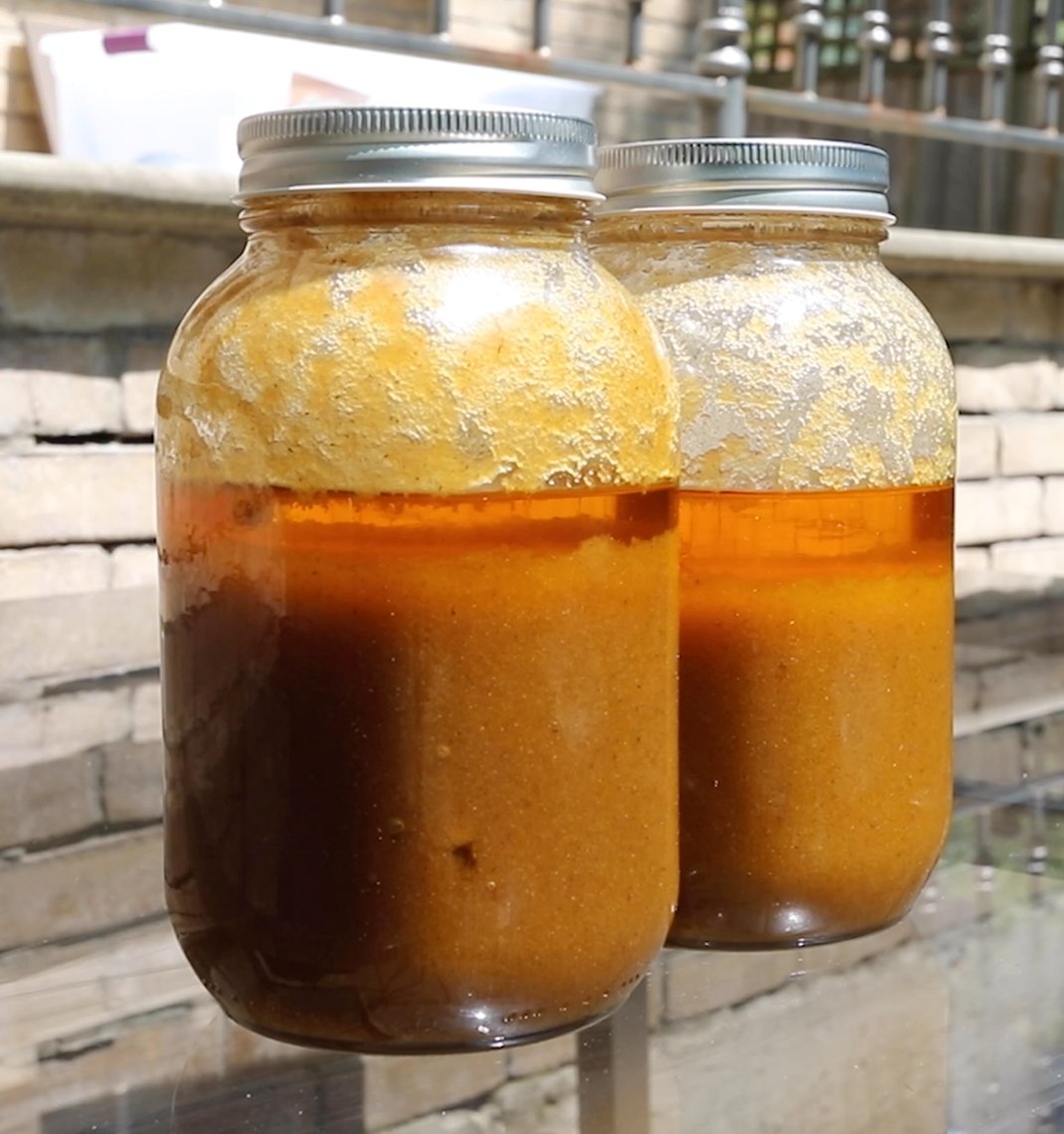Sun-Thickened Linseed Oil
I spent 3 summer months making sun-thickened linseed oil, using methods inspired by old masters like Rembrandt and Velazquez.
This summer I decided to create my own sun-thickened linseed oil using a process developed by Louis R. Velasquez, which uses a natural and chemical free method of cleansing and thickening cold-pressed flax seed oil, using the help of a secret ingredient called psyllium husk. The how-to manual titled ‘Rembrandt’s Superior Oil And How To Make It’ includes claims of improved handling properties and enhanced archival qualities like reduced yellowing. It was a fun process and I learned a lot along the way.
Rembrandt’s Superior Oil and How to Make It.
Louis R Velasquez’s manual, titled ‘Rembrandt’s Superior Oil and How to Make It.’
Louis R. Velasquez has no relation to the famous 17th century Spanish painter Diego Velazquez, whose paintings are still in excellent condition, by the way, but interestingly, this recipe is inspired by the 1649 writings of his teacher, Francisco Pacheco, so it’s possible that Velasquez refined his oil using a similar method. It’s also referred to as an old master’s oil, because some believe 16th and 17th century masters like Rembrandt, Rubens and Van Dyke used Sun-Thickened Linseed Oil.
Some refer to sun-thickened linseed oil as an August oil, because it takes about 3 months in the hot summer sun to create, so it’s best to start the process in late May or June, so the oil is finished by August.
Location determines how long the process takes. The sun might not be as hot and consistent in a northern location like Toronto, as it is in California, for instance.
Linseed Oil is considered the best oil for painting. Linseed oil mixed with paint pigment is special, because it bonds and encases the pigments to make a clear, translucent film, allowing light to refract through all layers. It has superior film forming properties, adhesive strength and a faster drying time, which is more of a personal preference.
There is no ‘Linseed’ in nature. Linseed oil is made from the oil of flax seeds and flax oil contains about 5% of what’s called ‘mucilage’, a complex mixture of aqueous and oleaginous material suspended in the oil, that must be removed for the purposes of painting since it decomposes and will permanently discolour or blacken bright colours over time. Some say it’s impossible to get rid of 100% of the mucilage in flax oil, but Velasquez claims this method is the most effective.
Pacheco, in the 16th century proposed using the buds of lavender flowers to extract mucilage, which is where Velasquez got the idea to use psyllium husk as an efficient and modern substitute for separating mucilage from fresh flax oil. By removing the mucilage and exposing the oil to the hot dry summer sun, Velasquez claims the linseed oil will become transparent, crystal clear and will not yellow over time.
The first filtering after 10 days of sun exposure. The oil mixture is placed in the funnel, to filter into the jar, psyllium husk and all.
Velasquez states that modern alkali-refined linseed oil methods did not exist in the era of Rembrandt and the Old Masters and unlike commercially available linseed oils, such as the ones you find at art supply stores, sun-thickened linseed oil has not been subjected to the same high heat and chemical solvents that degrade the oil, making it unsuitable for archival painting. Again, these are theories and beliefs that have not been independently verified by modern science.
In the meantime, I can only test this completely natural and solvent free method of refining oil for painting and decide if I like the increased drying time and long handling properities. If archival painting techniques are important to you, the only real test is the test of time. Hopefully, in a couple hundred years from now, the paintings I make with this oil will still be here with the same clarity and vibrancy as the day they were painted.
The sun-thickened linseed oil after about 2 months of sun exposed and daily stirring.
It was quite a long process to create this oil, and document it with video. Having to stir the oil twice daily became a morning and evening ritual during the summer months and there were a few botched batches along the way that had to be scraped. Whenever it looked overcast or rained, I worried that perhaps I forgot to cover the oil, and my oil might be ruined.
I’m looking forward to using the oil in a new series of paintings I’m working on this fall. Overall, I’m impressed by the final product and how much lighter and thicker the mucilage-free oil has become, compared with store purchased alklai-refined linseed oil. I’m also excited to create an egg glair or egg emulsion to use in combination with the sun-thickened linseed oil, which I hope will get me closer to the thixotropic paint quality of Rembrandt, which I desire.
I had so much fun making this, that I’ve decided to produce a small batch next summer for artists who may be interested in trying sun-thickened linseed oil, but don’t have the space or time to go through the process. Please follow the link below to pre-order your own 500ml bottle of JORDIN Sun-Thickened Linseed Oil, shipping September 2025.
Fire Hazard - A warning to artists using Linseed oil that it will self-ignite and any rags or paper towel soaked in linseed oil can be a fire hazard if not placed in a bucket of water after using.





